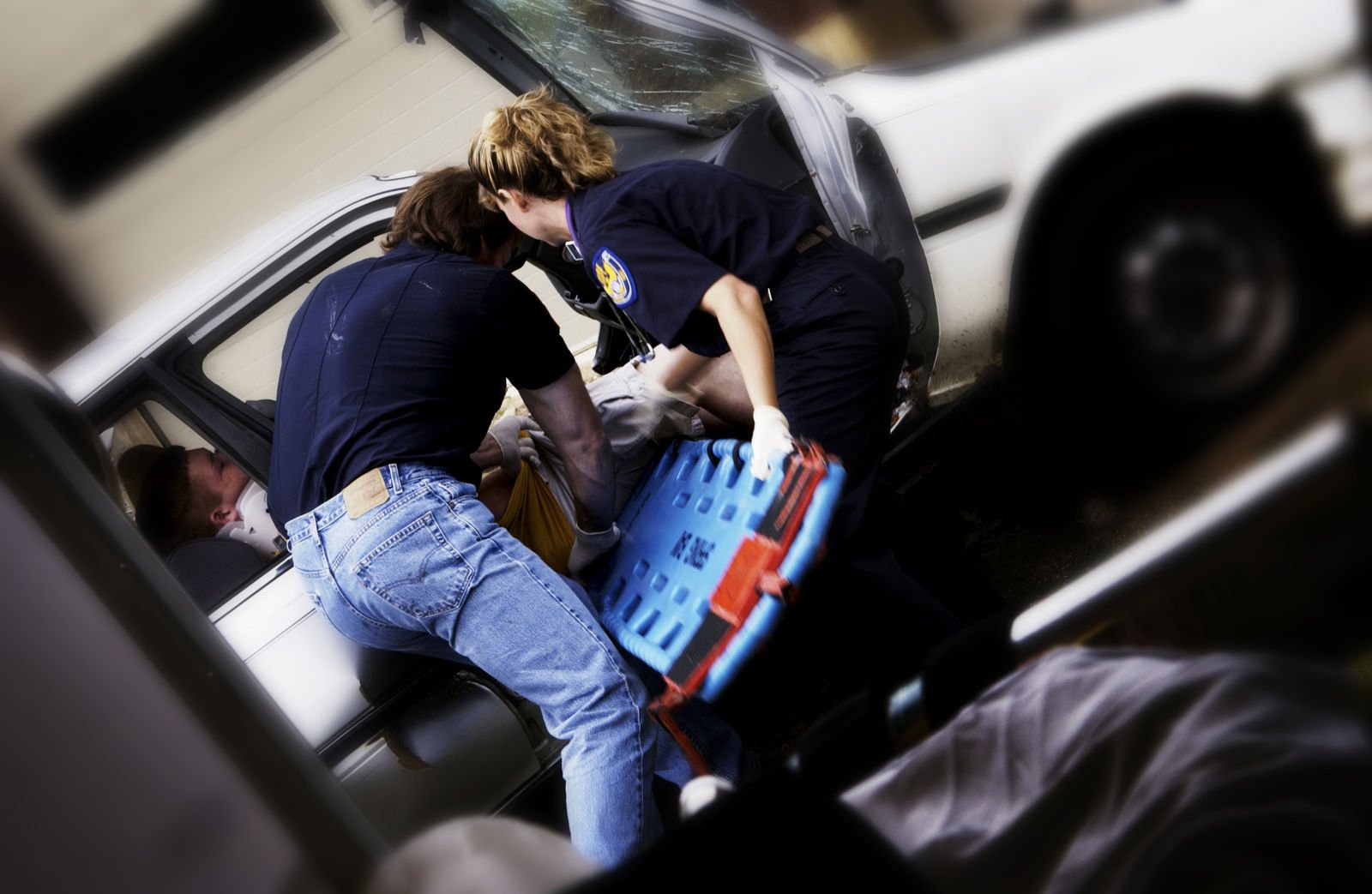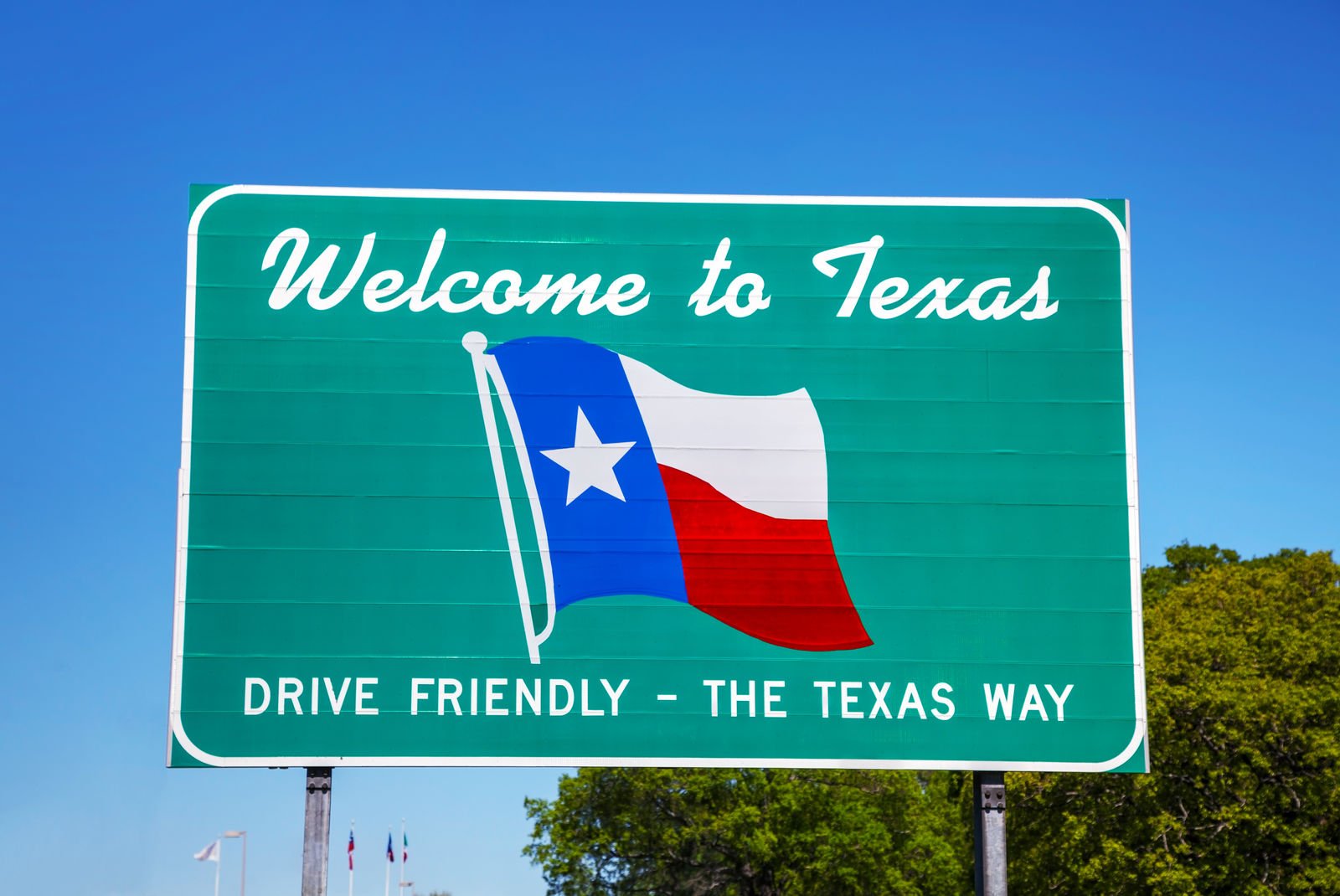Car Insurance Tier System: Explained Simply
A car insurance tier system is used to help calculate car insurance rates. An insurance score of 770 is considered good. Auto insurance coverage tiers refer to the level of coverage you choose.
Read more Secured with SHA-256 Encryption





Table of Contents
Table of Contents


Licensed Insurance Agent
Brandon Frady has been a licensed insurance agent and insurance office manager since 2018. He has experience in ventures from retail to finance, working positions from cashier to management, but it wasn’t until Brandon started working in the insurance industry that he truly felt at home in his career. In his day-to-day interactions, he aims to live out his business philosophy in how he treats hi...
Brandon Frady


Licensed Insurance Agent
Michelle Robbins has been a licensed insurance agent for over 13 years. Her career began in the real estate industry, supporting local realtors with title Insurance. After several years, Michelle shifted to real estate home warranty insurance, where she managed a territory of over 100 miles of real estate professionals. Later, Agent Robbins obtained more licensing and experience serving families a...
Michelle Robbins
Updated May 2024
- Car insurance companies rate drivers based on a lot of factors to calculate rates
- Your car insurance tier, or car insurance score, is part of what determines rates
- There are three types of car insurance, each with its own rate that adds up to the total
When you shop for insurance, you’re looking for the best auto insurance companies, right? Similarly, insurance companies want to seek the best clients as well. Car insurers operate by gauging risks in potential or active clients with a car insurance tier system.
We understand that the insurance industry can be complex and overwhelming. This is why we will cover tier systems step by step to help you determine which provider is right for you. Before learning more about the tiers for car insurance system, please feel free to type in your ZIP code above to find reasonable rates to suit your needs in your area.
What are the car insurance tiers?
You may be asking, “What is an insurance tier score?” This is a credit rating utilized by insurers to assess any potential customer’s level of risk. With an insurance tier rating, they then determine how much the potential policyholder’s monthly insurance premium will be. Insurance companies use levels to examine you and your driving history. This system eliminates surcharges and replaces them with risk ratings. The tiered system means that one accident won’t cause your individual or household policy to increase overnight. (For more information, read our “Car Insurance Policyholder: Explained Simply“).
Why is my car insurance score so low? The score spans from 200 to 997, and a lower score suggests a greater perceived risk level.
Most insurers divide their drivers into three insurance score tiers:
- Preferred tier: In the preferred tier, the customers have a clean driving record, no lapse in coverage, excellent credit score, and a low number of claims filed.
- Standard tier: These drivers have an average credit score, previous insurance coverage, and either one or two minor traffic violations, and one at-fault accident.
- High-risk or nonstandard tier: These drivers have no previous insurance coverage, a poor credit score, numerous accidents, and have filed several claims.
Now you’re probably wondering, “What is considered good car insurance coverage?” or “What is a good score for auto insurance?” If you have a score of 770 or higher, you are in a good range. If you have a lower score, you are seen as a larger risk and are probably going to be paying higher monthly premiums.
What factors determine your auto insurance premium? There are numerous factors within auto insurance coverage tiers that are considered when determining risk.
There are primary and, occasionally, secondary factors that insurers consider.
Let’s cover the main factors, starting with age. Due to their lack of experience, young and unproven drivers will unavoidably have to pay higher premiums. After about nine years of safe driving, they will see their rates decrease.
This touches on another primary aspect that insurers consider when determining risk, which is a policyholder’s driving history. Other factors include the customer’s credit score, years of experience behind the wheel, insurance history, coverage level, and claims frequency.
Read more: Compare Primary vs. Secondary Car Insurance: Rates, Discounts, & Requirements
So, what is a car insurance tier by definition? It is simply a level at which an insurer can examine you and your credit history. If you’re wondering, “Why is my car insurance so high?” it is likely because your insurer saw you as a risk, based on several factors. Perhaps you are young and inexperienced driver. Maybe you have multiple filed claims on your record. Everything is taken into consideration.
What makes car insurance rates go down? The simplest answer is safe driving over an elongated period. You may also bundle policies, take driver education courses, and take advantage of low mileage discounts. Drive Safely can help you find drivers education classes in your state.
Just about every insurer offers various discounts, so inquire with your insurance agent about how you can knock down your rates.
Naturally the inverse must also be true. How does car insurance go up? Poor driving is the central cause of increasing rates. If you drive safely and take advantage of every discount you can, you will most likely avoid this issue.
Free Insurance Comparison
Compare Quotes From Top Companies and Save
Secured with SHA-256 Encryption
What are the three types of car insurance?
There are also car insurance policy tiers, or car insurance coverage tiers. This is to do with how much coverage you carry. What are the three types of car insurance? Liability auto insurance coverage, collision insurance, and comprehensive car insurance are the three most common types of coverage. Liability insurance protects you in a situation where you cause damage to another’s body or property. This video further explains liability coverage.
Liability coverage doesn’t just cover the policyholder, it also covers any family members that are listed on the policy. Furthermore, this coverage helps you even when you are driving another person’s car, as long as you have permission to do so. A policyholder has the option to buy more than the state-required minimum coverage to protect them in case they get sued.
This next table shows the minimum requirements for liability coverage in each state. In the third column, you’ll see three numbers separated by slash marks. The first number is a limit for one individual, the second is for all persons injured in an accident, and the third is coverage for property damage. Additionally, BI means bodily injury, PD means property damage, UM means uninsured motorist, UIM means underinsured motorist, and MedPay means medical payments coverage.
Car Insurance Coverage Requirements by State
| State | Coverages | Limits |
|---|---|---|
| Alabama | Bodily injury and property damage liability | 25/50/25 |
| Alaska | Bodily injury and property damage liability | 50/100/25 |
| Arizona | Bodily injury and property damage liability | 25/50/15 |
| Arkansas | Bodily injury and property damage liability, personal injury protection (PIP) | 25/50/25 |
| California | Bodily injury and property damage liability | 15/30/5 |
| Colorado | Bodily injury and property damage liability | 25/50/15 |
| Connecticut | Bodily injury and property damage liability, uninsured/underinsured motorist (UM, UIM) | 25/50/25 |
| Delaware | Bodily injury and property damage liability, personal injury protection (PIP) | 25/50/10 |
| Florida | Property damage liability, personal injury protection (PIP) | 10/20/10 |
| Georgia | Bodily injury and property damage liability | 25/50/25 |
| Hawaii | Bodily injury and property damage liability, personal injury protection (PIP) | 20/40/10 |
| Idaho | Bodily injury and property damage liability | 25/50/15 |
| Illinois | Bodily injury and property damage liability, uninsured/underinsured motorist (UM, UIM) | 25/50/20 |
| Indiana | Bodily injury and property damage liability | 25/50/25 |
| Iowa | Bodily injury and property damage liability | 20/40/15 |
| Kansas | Bodily injury and property damage liability, personal injury protection (PIP) | 25/50/25 |
| Kentucky | Bodily injury and property damage liability, personal injury protection (PIP), uninsured/underinsured motorist (UM, UIM) | 25/50/25 |
| Louisiana | Bodily injury and property damage liability | 15/30/25 |
| Maine | Bodily injury and property damage liability, uninsured/underinsured motorist (UM, UIM), medical payments (Medpay) | 50/100/25 |
| Maryland | Bodily injury and property damage liability, personal injury protection (PIP), uninsured/underinsured motorist (UM, UIM) | 30/60/15 |
| Massachusetts | Bodily injury and property damage liability, personal injury protection (PIP) | 20/40/5 |
| Michigan | Bodily injury and property damage liability, personal injury protection (PIP) | 20/40/10 |
| Minnesota | Bodily injury and property damage liability, personal injury protection (PIP), uninsured/underinsured motorist (UM, UIM) | 30/60/10 |
| Mississippi | Bodily injury and property damage liability | 25/50/25 |
| Missouri | Bodily injury and property damage liability, uninsured/underinsured motorist (UM) | 25/50/25 |
| Montana | Bodily injury and property damage liability | 25/50/20 |
| Nebraska | Bodily injury and property damage liability, uninsured/underinsured motorist (UM, UIM) | 25/50/25 |
| Nevada | Bodily injury and property damage liability | 25/50/20 |
| New Hampshire | Financial responsibility (FR) only | 25/50/25 |
| New Jersey | Bodily injury and property damage liability, personal injury protection (PIP), uninsured/underinsured motorist (UM, UIM) | 15/30/5 |
| New Mexico | Bodily injury and property damage liability | 25/50/10 |
| New York | Bodily injury and property damage liability, personal injury protection (PIP), uninsured/underinsured motorist (UM, UIM) | 25/50/10 |
| North Carolina | Bodily injury and property damage liability, uninsured/underinsured motorist (UM, UIM) | 30/60/25 |
| North Dakota | Bodily injury and property damage liability, personal injury protection (PIP), uninsured/underinsured motorist (UM, UIM) | 25/50/25 |
| Ohio | Bodily injury and property damage liability | 25/50/25 |
| Oklahoma | Bodily injury and property damage liability | 25/50/25 |
| Oregon | Bodily injury and property damage liability, personal injury protection (PIP), uninsured/underinsured motorist (UM, UIM) | 25/50/20 |
| Pennsylvania | Bodily injury and property damage liability, personal injury protection (PIP) | 15/30/5 |
| Rhode Island | Bodily injury and property damage liability | 25/50/25 |
| South Carolina | Bodily injury and property damage liability, uninsured/underinsured motorist (UM) | 25/50/25 |
| South Dakota | Bodily injury and property damage liability, uninsured/underinsured motorist (UM, UIM) | 25/50/25 |
| Tennessee | Bodily injury and property damage liability | 25/50/15 |
| Texas | Bodily injury and property damage liability, personal injury protection (PIP) | 30/60/25 |
| Utah | Bodily injury and property damage liability, personal injury protection (PIP) | 25/65/15 |
| Vermont | Bodily injury and property damage liability, uninsured/underinsured motorist (UM, UIM) | 25/50/10 |
| Virginia | Bodily injury and property damage liability, uninsured/underinsured motorist (UM, UIM) | 25/50/20 |
| Washington, D.C | Bodily injury and property damage liability | 25/50/10 |
| West Virginia | Bodily injury and property damage liability, uninsured/underinsured motorist (UM, UIM) | 25/50/25 |
| Wisconsin | Bodily injury and property damage liability, uninsured/underinsured motorist (UM, Medpay) | 25/50/10 |
| Wyoming | Bodily injury and property damage liability | 25/50/20 |
Property damage liability is like bodily injury liability, except it covers damage done to someone else’s car rather than their body. It also includes damage to telephone poles, fences, buildings, and other inanimate objects.
Collision coverage is the next form of mandatory insurance. This pays for damage to the policyholder’s car that was sustained in a collision. Even if a policyholder is at fault in an accident, this coverage will reimburse them for car repair costs. If the policyholder isn’t at fault, their insurer may try to recover the money spent from the at-fault driver’s insurer.
The final mandatory coverage is comprehensive insurance. This reimburses for a policyholder’s loss in the event that anything other than a collision befalls their car. Damage from fire, windstorms, hail, floods, vandalism, riots, deer, and even missiles may be covered by comprehensive insurance. Like liability, this coverage also allows policyholders to purchase more than the minimum amount.
There is optional coverage as well. Uninsured and underinsured motorist coverage both reimburse the policyholder if they are hit by someone who does not have enough coverage or no coverage at all, which is more prevalent than you might think.
Medical payments (MedPay) and personal injury protection car insurance (PIP) pay for the treatment of injuries to the policyholder and their passengers. PIP also covers lost wages and, occasionally, funeral costs.
Now that you know about the car insurance tier system, type in your ZIP code in our tool below to find reasonable rates in your area.
Case Studies: Exploring the Impact of the Car Insurance Tier System
Case Study 1: Emily’s Excellent Record
Emily is a 35-year-old driver with a clean driving history and no previous accidents or claims. She has maintained a high credit score and drives a safe and reliable vehicle.
Due to her excellent record and low-risk profile, Emily is placed in the top tier of the car insurance tier system. As a result, she enjoys lower insurance premiums compared to drivers in higher-risk tiers.
Case Study 2: Mark’s Multiple Accidents
Mark is a 22-year-old driver with a history of multiple accidents and traffic violations. He has a low credit score and drives a high-performance sports car.
Due to his risky driving behavior and high-risk profile, Mark is placed in a lower tier of the car insurance tier system. As a result, he faces significantly higher insurance premiums compared to drivers in lower-risk tiers.
Case Study 3: Sarah’s Steady Driving
Sarah is a 45-year-old driver with a consistent and safe driving record. She has a good credit score and drives a mid-range sedan. Sarah falls into the average-risk tier of the car insurance tier system.
While her premiums are not as low as those in the top tier, she still enjoys relatively affordable insurance rates due to her responsible driving behavior.
Case Study 4: Alex’s Inexperience
Alex is a 19-year-old driver who just got their driver’s license. As a young and inexperienced driver, Alex is placed in a higher-risk tier of the car insurance tier system.
Despite having a clean driving record, their lack of driving experience contributes to higher insurance premiums. As Alex gains more driving experience and builds a positive record, they may eventually move to a lower-risk tier and enjoy lower premiums.
Frequently Asked Questions
What is a car insurance tier system?
The car insurance tier system is a classification method used by insurance companies to categorize drivers into different risk groups based on various factors such as driving history, age, type of vehicle, and more. Each tier represents a different level of risk, which affects the cost of insurance premiums.
How does the car insurance tier system work?
Insurance companies analyze several factors, including driving record, claims history, credit score, age, and other demographic information to assign drivers to different tiers. Drivers with a higher risk profile are placed in higher tiers and generally pay higher insurance premiums, while those with a lower risk profile are placed in lower tiers and pay lower premiums.
What are the benefits of the car insurance tier system?
- Fairness: The tier system allows insurance companies to assess risk more accurately, ensuring that drivers with higher risks contribute more to the insurance pool.
- Customized premiums: By categorizing drivers into different tiers, insurance companies can offer more personalized insurance rates based on individual risk profiles.
- Incentives for safe driving: The tier system encourages drivers to maintain a good driving record and lower their risk, as it can result in lower insurance premiums.
What are the drawbacks of the car insurance tier system?
- Lack of transparency: Insurance companies may use proprietary algorithms and complex calculations to determine tiers, which can make it challenging for drivers to understand how they are categorized.
- Limited control: Some factors used to determine tiers, such as age or credit score, may be beyond a driver’s control, potentially leading to higher premiums despite being a safe driver.
- Potential discrimination: There is a concern that certain demographic factors, like age or zip code, may disproportionately affect certain groups, leading to potential discrimination or unfair treatment.
Can I improve my tier and lower my insurance premiums?
Yes, in many cases, you can improve your tier and lower your insurance premiums. By maintaining a clean driving record, avoiding accidents, and adhering to traffic laws, you can demonstrate responsible driving behavior, which may result in a lower tier placement and reduced premiums. Additionally, improving your credit score and maintaining a good credit history can also positively impact your insurance tier.
Can I switch insurance companies to change my tier?
Yes, switching insurance companies can potentially lead to a change in your tier placement. Each insurance company has its own criteria and algorithms for determining tiers, so you might be classified differently by a different insurer. However, it’s important to note that changing companies solely for the purpose of tier placement may not always guarantee a better outcome, as other factors such as coverage options and customer service should also be considered.
Get a FREE Quote in Minutes
Insurance rates change constantly — we help you stay ahead by making it easy to compare top options and save.





